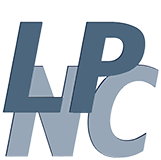- Share
- Share on Facebook
- Share on X
- Share on LinkedIn
Equipe Développement et Apprentissage, Research
Bone conduction in speech and music – INCEPTION-CONTROL
During speech, singing, or music playing, the auditory feedback involves both an aerial component received by the external ear, and an internal vibration: the ‘bone conduction’ component. While the speaker or musician hears both components, a listener only hears the aerial part. Thus, a person, child or adult, must learn to control oral sound production with a different information than that communicated. Since von Bekesy (1949), studies have consistently found that about half of the cochlear signal comes from bone conduction, but the information it conveys, and how it impacts oral motor control, is still unclear. Previous studies have highlighted important differences in spectral balance between the aerial- and bone-conducted signal during speech, but these studies have not led to an understanding of their possible difference in terms of informational content. Besides, nearly nothing is known of the bone-conducted feedback of other oral audiomotor behaviors like singing or playing a wind instrument through a mouthpiece (although modulation of auditory feedback by ear protectors is obvious, and some studies noted their behavioral consequences). Recent preliminary findings of our consortium suggest that specific information exists in the bone-conducted signal of speech, and in particular, information related to articulator (tongue) position. This intriguing observation warrants further examination and raises several questions. How does the bone-conducted component differ from the aerial component in general, during oral audiomotor tasks (speech, singing, playing a wind instrument), and can we explain these differences, e.g. link them to articulator motion? Are these differences typical, or does bone-conducted auditory feedback vary significantly among individuals and could explain behavioral idiosyncrasies? Can we recover the complete auditory signal that subjects obtain during oral audiomotor tasks, that is, including faithfully its bone-conducted part? How does bone-conduction affect perception of ones’ production in speech and music; in particular, does it lead to biases in auditory perception? Last, does bone-conducted sound guide audiomotor behavior, or in other words, is sound production guided by sounds that cannot be perceived by the interlocutor or the audience? The aim of the present project is to tackle these questions by combining 1) careful experimental extraction of the bone-conducted component thanks to deep in-ear recording during speech and music production, using a specially developed experimental apparatus; 2) a modeling approach, using signal processing, statistical and information-theoretic tools; 3) experimental psychoacoustics to analyze auditory perception; and 4) a sensory modification method for which a novel technique based on sound cancelation will be developed, in order to demonstrate behavioral consequences of a bone conduction perturbation. Answers to the aforementioned questions should help appreciate the role of the invisible part of the auditory iceberg, understand how the central nervous system uses the auditory feedback even when its acoustic communicative goal is different, and pave the way for further research on audiomotor control, in particular its short-term flexibility and longer-term plasticity. Our consortium unites specialists of sensorimotor control, acoustics, phonetics, psychoacoustics, music and modeling around this undertaking, that should contribute both to behavioral/cognitive neuroscience, phonetics and to artistic practice, and could translate down the road into improvements in speech therapy, speech communication systems and ear protection devices.
Coordinator & Partners
Coordinator : Pierre Baraduc (Grenoble Images Parole Signal Automatique)
Partners :
GIPSA-lab Grenoble Images Parole Signal Automatique
LPNC LABORATOIRE DE PSYCHOLOGIE ET NEUROCOGNITION
Beginning and duration of the scientific project: March 2022 - 42 Months
- Share
- Share on Facebook
- Share on X
- Share on LinkedIn
